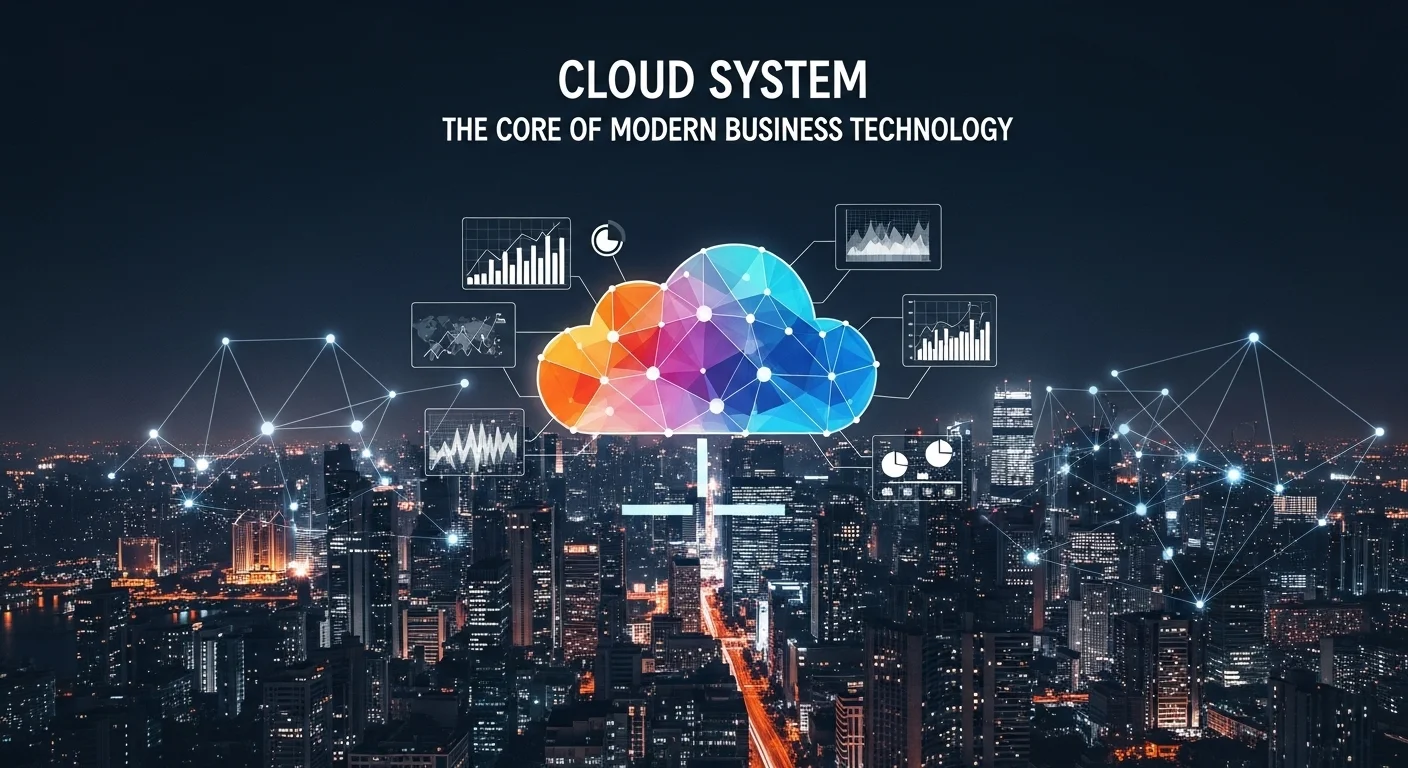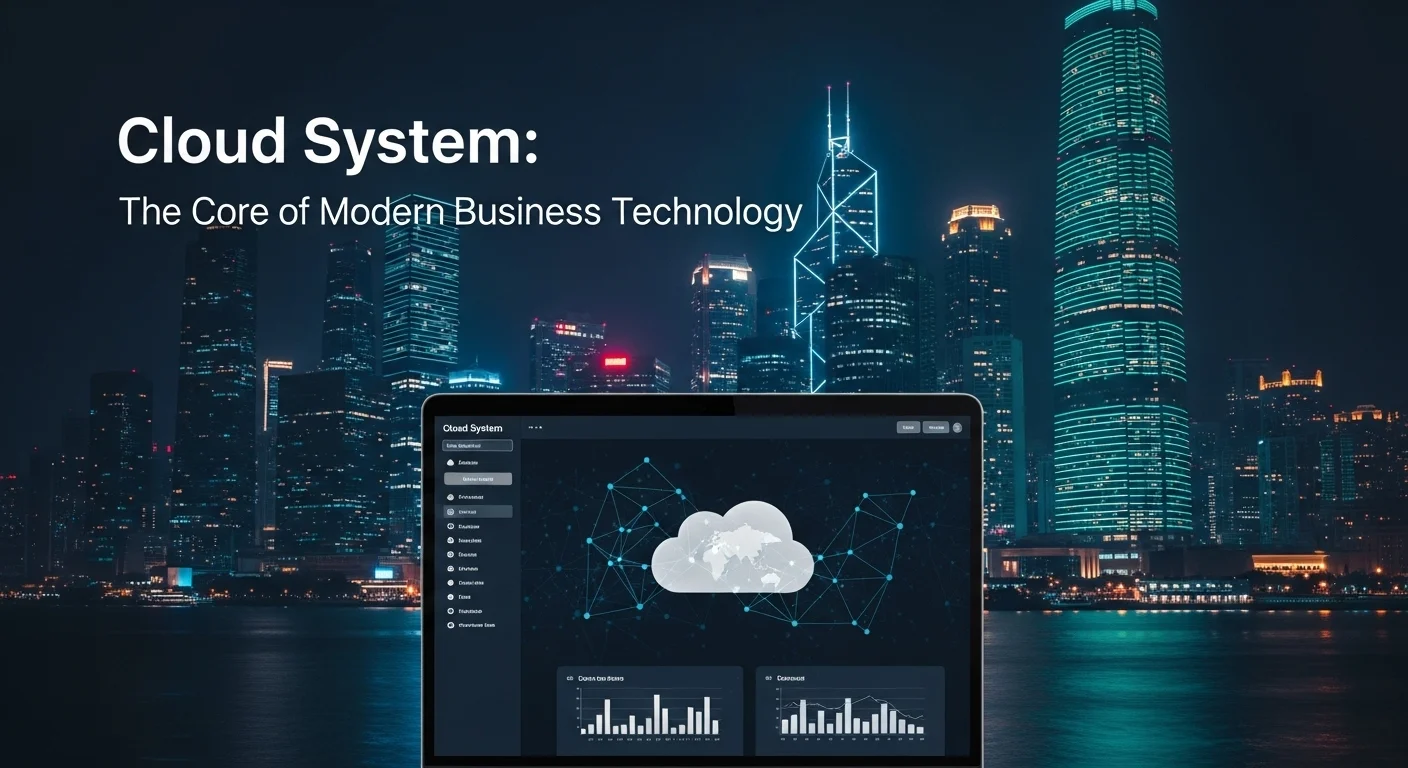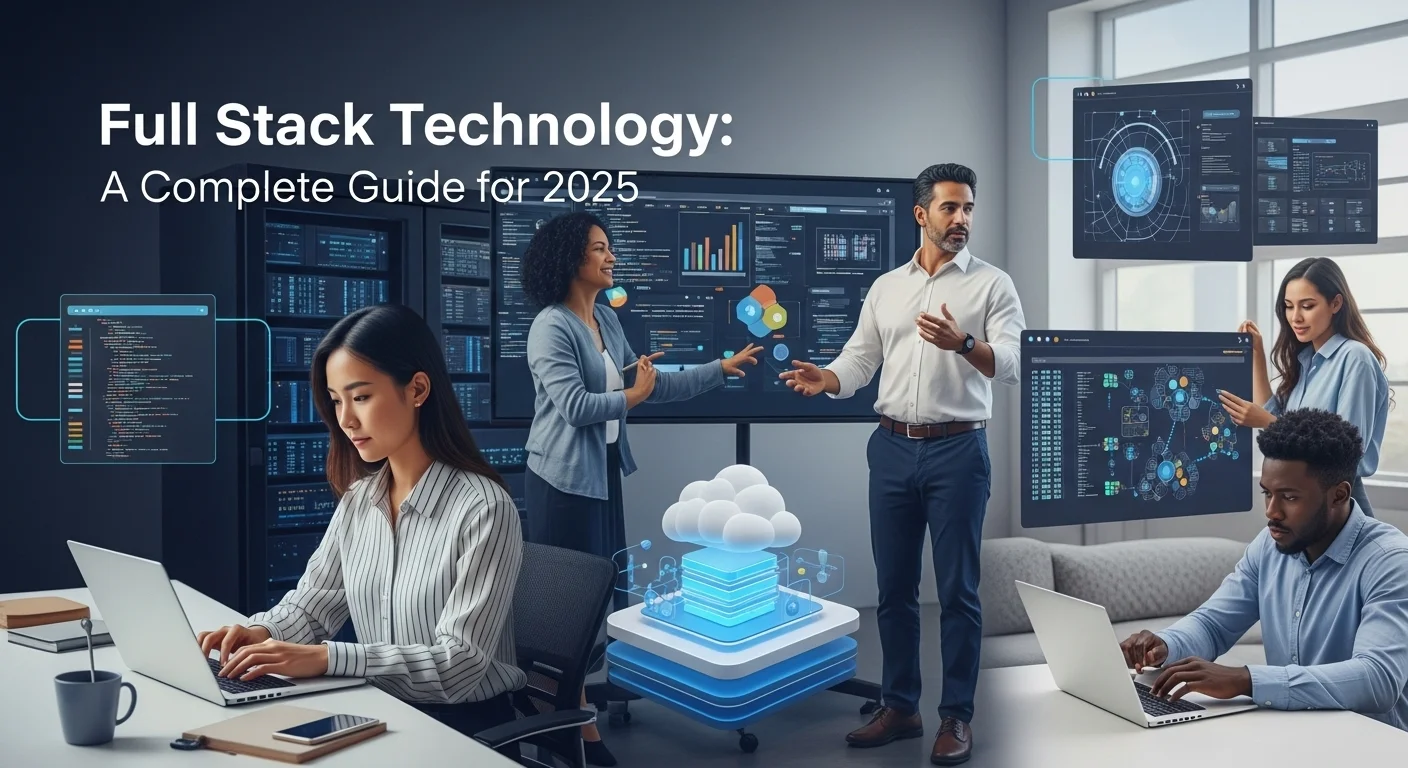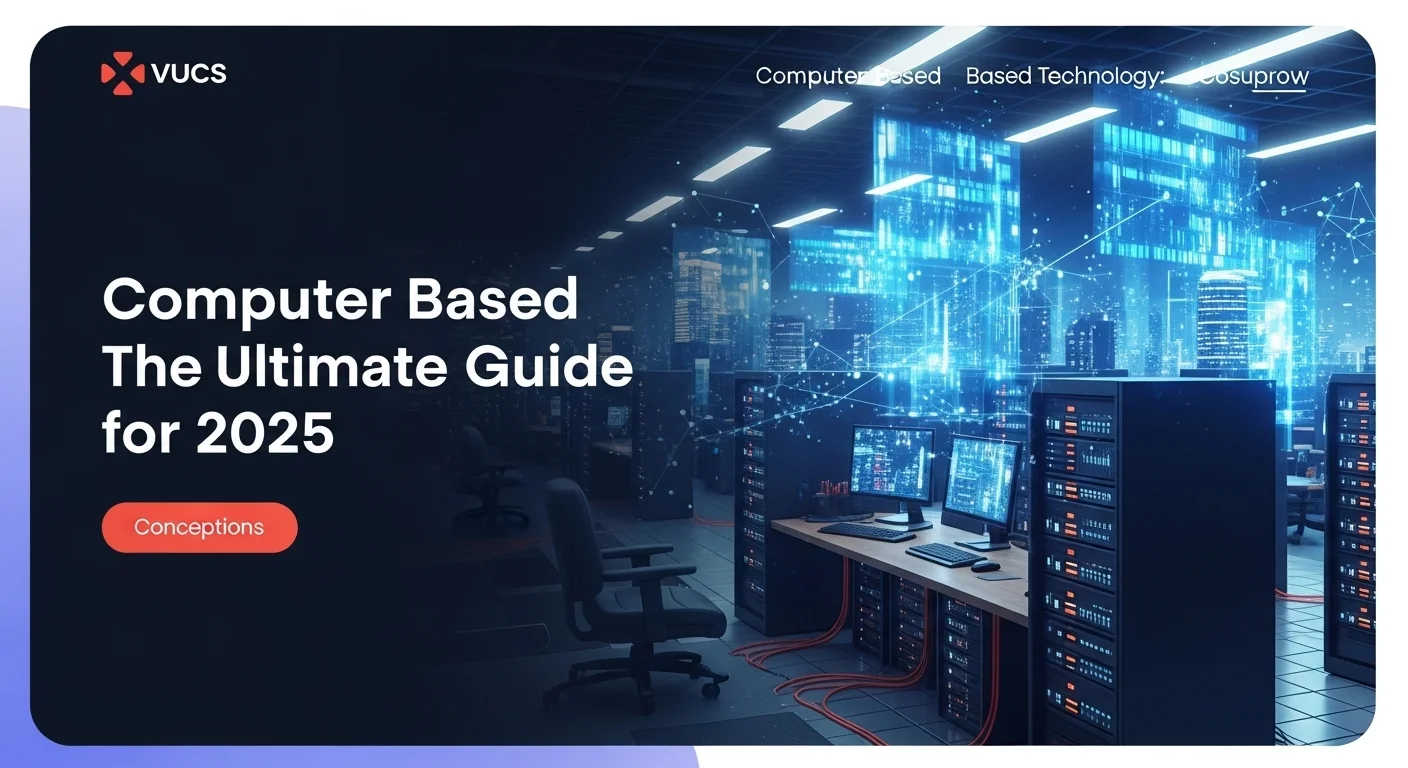What is a Cloud System? A Simple Guide to the Engine of Modern Business

Executive Summary
I've been working with cloud technology since its early days, and I still remember the time when setting up a new business application meant waiting weeks for physical servers to be ordered and installed. Today, we can launch a global-scale application in a matter of minutes. That’s the incredible power of a cloud system. In simple terms, it's about accessing computing resources—like storage, software, and processing power—over the internet, paying only for what you use. This shift has been a game-changer for businesses of all sizes, making powerful technology accessible to everyone. In this guide, I'll walk you through everything you need to know. We'll cover the basic building blocks (IaaS, PaaS, SaaS), explore the different types of clouds (Public, Private, Hybrid), and tackle the big questions around security and architecture. My goal is to demystify the cloud and show you how to leverage it to drive real growth and innovation in your own business.
Table of Contents
Table of Contents
- What is a Cloud System and Why is it so Important?
- Understanding the Core Components: IaaS, PaaS, and SaaS
- Deployment Models: Public, Private, and Hybrid Clouds
- The Transformative Impact of Cloud Systems on Business
- A Deeper Look at Modern Cloud Architecture
- The Critical Pillar: Cloud System Security
- Cloud-Based Workflow Management Systems
- Choosing the Right Cloud Provider and Solutions
- Best Practices for Cloud Management and Optimization
- Advanced Strategies for Cloud System Security
- Leveraging the Cloud for Business Innovation
What is a Cloud System and Why is it so Important?
In today's world, the word 'cloud' is everywhere, but what does it actually mean? At its heart, a cloud system is a model for 'renting' computing resources over the internet instead of buying and maintaining your own. Think of it as accessing a massive, shared pool of resources like servers, storage, and applications whenever you need them. You can fire them up in minutes and shut them down just as quickly, all without talking to a single person. This technology has completely changed the game for IT and business. For years, I saw companies pour huge amounts of money into physical data centers that were expensive to build and a headache to maintain. The cloud changed all that. Now, businesses can tap into the power of providers like Amazon Web Services (AWS), Microsoft Azure, or Google Cloud, paying for services as they go, much like a utility bill. This isn't just a technical shift; it's a financial one, moving from massive upfront investments (Capital Expenditure) to predictable operational costs (Operational Expenditure), which has opened the door for incredible innovation.
Understanding the Core Components: IaaS, PaaS, and SaaS
To really get a handle on the cloud, you need to understand its three main service models: IaaS, PaaS, and SaaS. I like to think of them using a simple analogy: building a house. Each model offers a different level of 'do-it-for-me' service.
Infrastructure as a Service (IaaS): This is the most fundamental level. With IaaS, you're essentially leasing the land and raw materials. The cloud provider gives you the basic infrastructure—virtual servers, storage, networking—and you build everything else on top. You're in control of the operating system and all your applications. I've seen teams use IaaS to build highly customized environments for development, testing, or analyzing huge datasets. It gives you maximum flexibility without having to own any physical hardware.
Platform as a Service (PaaS): PaaS is like renting a pre-built house frame with all the utilities connected. The provider manages the servers, storage, and networking, but also gives you the platform and tools to build and run your applications. This means developers can just focus on writing code and creating great software without worrying about the underlying infrastructure. A great example is a cloud-based accounting system; the company that built the software likely used a PaaS platform to develop and deploy it, which they then offer to you as a finished product.
Software as a Service (SaaS): This is the most common model and the one we all use every day. SaaS is like renting a fully furnished, all-inclusive apartment. You simply access the software over the internet on a subscription basis. The provider handles everything—the infrastructure, the platform, the software itself, and all the maintenance and upgrades. Think of Gmail, Microsoft 365, or Salesforce. These ready-to-use cloud based systems are incredibly convenient and accessible for everyone.
Deployment Models: Public, Private, and Hybrid Clouds
Beyond the 'what', there's the 'where'. Cloud systems are deployed in three main ways, each with its own trade-offs.
Public Cloud: The public cloud is like a giant, bustling apartment complex owned and operated by a third-party provider like Microsoft Azure. You rent an apartment (your computing resources) and share the building's infrastructure with other tenants. It's incredibly scalable, cost-effective, and reliable because the provider manages everything at a massive scale.
Private Cloud: A private cloud is your own single-family home. The computing resources are dedicated exclusively to your organization. It can be located at your own data center or hosted by a third party, but it's entirely for your use. In my experience, government agencies and financial institutions often prefer this model because it offers maximum control and enhances cloud system security for sensitive operations.
Hybrid Cloud: The hybrid cloud is the best of both worlds. It's like owning your own house (private cloud) but also renting a storage unit (public cloud) for things you don't need to access every day or when you have guests over. This model lets you keep sensitive data secure in your private cloud while using the public cloud for less critical tasks or to handle sudden spikes in traffic. It offers a great balance of security, control, scalability, and cost-efficiency.
The Transformative Impact of Cloud Systems on Business
Adopting cloud based systems is no longer just an IT decision; it's a core business strategy. The benefits I've seen it deliver are profound and go way beyond just saving money.
Agility and Speed: The cloud allows businesses to move at lightning speed. You can test a new idea or launch a new product in days instead of months. This ability to adapt quickly is a massive competitive advantage in today's fast-paced market.
Scalability on Demand: With a cloud based computer system, you can scale your resources up or down in real-time. This elasticity means you're not paying for idle servers during slow periods but can instantly handle a surge in traffic during a big launch. It’s about having exactly what you need, right when you need it.
Collaboration Anywhere: Cloud-based tools have made remote work and global teams a reality. By having a central place for data and projects, teams can collaborate seamlessly, boosting productivity and sparking creativity no matter where they are.
Robust Security and Recovery: While security is a valid concern, top cloud providers invest billions in security measures that are far beyond the reach of most individual companies. They also make disaster recovery much simpler and more affordable, ensuring your business can stay online even if something goes wrong.
Access to Cutting-Edge Tech: The cloud is your ticket to using advanced technologies like Artificial Intelligence (AI), Machine Learning (ML), and the Internet of Things (IoT). These are offered as services, allowing any business to innovate without a huge upfront investment. The future is built on the cloud, and embracing it prepares your business for whatever comes next.

A Deeper Look at Modern Cloud Architecture
To truly appreciate a cloud system, it helps to peek under the hood. It’s not magic; it’s just incredibly smart engineering. Understanding the architecture helps you make better decisions about how to build your applications for top performance and efficiency. For any business leader, knowing these concepts is key to having a meaningful conversation with your tech team.
Virtualization: The Foundation
Everything in the cloud starts with virtualization. This is the technology that lets a single, powerful physical server act like dozens of smaller, separate virtual servers, often called virtual machines (VMs). A special piece of software called a hypervisor manages this, slicing up the physical hardware's resources—CPU, memory, storage—and dedicating them to each VM. It's the core innovation that makes the cloud's resource-sharing model possible and cost-effective.
Containers: The Next Step in Efficiency
If VMs are like houses, containers are like apartments within a single building. Instead of virtualizing the hardware, containers virtualize the operating system. A container is a neat little package that holds everything an application needs to run: the code, tools, and libraries. Because they share the host system's core (kernel), they are incredibly lightweight and fast. This is why technologies like Docker and orchestration platforms like Kubernetes have become so popular. A modern cloud based computer system often uses containers to build applications as a set of small, independent 'microservices', which makes them easier to update and scale.
Serverless: The Ultimate Abstraction
Serverless computing takes this a step further, letting you run code without thinking about servers or containers at all. You just provide the code, and the cloud provider handles everything required to run it in response to specific events, like a user uploading a photo. It's the ultimate pay-for-what-you-use model, as you're often billed down to the millisecond of compute time. From my perspective, this is one of the most exciting areas of cloud computing because it allows developers to focus purely on creating value.
The Critical Pillar: Cloud System Security
When I talk to clients, cloud system security is always a top concern. The key thing to remember is that security in the cloud is a shared responsibility—a handshake between you and the provider. The provider secures the cloud itself (the physical data centers and infrastructure), but you are responsible for securing what you put *in* the cloud (your data, applications, and user access).
Key Security Practices I Always Recommend:
- Identity and Access Management (IAM): This is your front door. Control who can access what. Always follow the 'principle of least privilege'—give people the absolute minimum access they need to do their job. And please, enforce multi-factor authentication (MFA). It's one of the single most effective security measures you can take.
- Encrypt Everything: Your data should be unreadable to anyone who isn't authorized. Encrypt it when it's stored (at rest) and when it's moving across the network (in transit). Cloud providers make this relatively easy to implement.
- Secure Your Network: Use virtual private clouds (VPCs) and firewalls to create isolated, secure zones for your applications. Think of it as creating secure rooms within your cloud environment to limit the blast radius if a breach were to occur.
- Stay Vigilant with Monitoring: You can't protect against what you can't see. Use monitoring and logging tools to keep an eye on your environment for any suspicious activity. Many tools can now automatically detect misconfigurations and send alerts.
- Meet Compliance Needs: If you're in a regulated industry like healthcare or finance, ensure your cloud setup meets standards like HIPAA or GDPR. Providers offer a wealth of tools and certifications to help with this.
Cloud-Based Workflow Management Systems
So many business processes are just a series of tasks—a workflow. The architecture of a workflow management system in cloud computing is designed to automate and orchestrate these processes at scale. Imagine an e-commerce order: a customer clicks 'buy', payment is processed, inventory is checked, a shipping label is created, and the customer is notified. A cloud workflow engine manages this entire sequence, ensuring each step happens correctly and reliably, even if millions of orders are coming in.
These systems, like AWS Step Functions or Azure Logic Apps, are the invisible engines behind many modern applications. They provide the tools to visually design these flows, and the cloud's scalable infrastructure ensures they run flawlessly, handling everything from simple IT automation to complex data processing pipelines.
Choosing the Right Cloud Provider and Solutions
The cloud market is dominated by three giants: Amazon Web Services (AWS), Microsoft Azure, and Google Cloud Platform (GCP). Choosing the right one depends entirely on your needs.
Amazon Web Services (AWS): The original leader and the market's superstore. AWS has the most extensive range of services and a massive global footprint. I often recommend it to businesses that need a wide array of tools and want the reliability of the most mature platform.
Microsoft Azure: The go-to choice for enterprises that are already deeply integrated with Microsoft products. If your business runs on Windows Server, Office 365, and Active Directory, Azure offers seamless integration and is a powerhouse for hybrid cloud strategies.
Google Cloud Platform (GCP): The specialist in data, analytics, machine learning, and containers. GCP is often favored by tech-forward companies and developers who need top-tier performance in these areas. Its roots in running Google's own massive services, like Search and YouTube, give it incredible engineering credibility.
Increasingly, I see companies adopting a multi-cloud strategy, picking and choosing the best services from different providers. When evaluating solutions, understanding the underlying model is key. Knowing that a cloud based accounting system is paas-built, for example, tells you that it's likely built on a scalable and flexible platform. A successful cloud strategy is one that aligns these technology choices with your specific business goals, turning your entire cloud based computer system into a true engine for growth.

Best Practices for Cloud Management and Optimization
Getting onto the cloud is just the first step. The real magic happens when you master managing it. From my experience, organizations that thrive in the cloud are the ones that treat it as an ongoing practice of refinement and optimization. Here are some actionable strategies to elevate your cloud game and ensure you're getting the most value from your investment.
1. Master Your Costs with FinOps
The cloud's pay-as-you-go model is fantastic for flexibility, but without careful management, costs can quickly become a surprise. This is where FinOps, or Cloud Financial Operations, comes in. It's less about a specific tool and more about a cultural shift that gets your finance, tech, and business teams speaking the same language about cloud spending.
Actionable Tips:
- Tag Everything: I can't stress this enough. Create a solid tagging strategy for all your cloud resources. Tagging by project, department, or owner allows you to see exactly where your money is going and hold teams accountable.
- Set Budgets and Alerts: Don't wait for the end-of-month bill. Use the provider's tools to set spending budgets and alerts that notify you when costs are trending higher than expected. This lets you be proactive, not reactive.
- Rightsize Relentlessly: Regularly check for wasted resources. Are you paying for a huge virtual machine that's only using 10% of its capacity? Are there storage volumes sitting around unattached to anything? Find this waste and eliminate it.
- Use Savings Plans: If you have predictable workloads, commit to Savings Plans or Reserved Instances. You can save up to 70% just by telling your provider you'll be using their services for one to three years. It's one of the easiest ways to cut costs.
2. Automate to Accelerate
In the cloud, manual work is your enemy. It's slow, prone to human error, and doesn't scale. Automation is the key to building an efficient, reliable, and secure cloud operation. The goal isn't to replace people, but to free them from tedious work so they can focus on innovation.
Actionable Tools and Techniques:
- Infrastructure as Code (IaC): Use tools like Terraform or AWS CloudFormation to define your entire infrastructure in code. This makes your environment reproducible, version-controlled, and easy to change in an an automated, predictable way.
- Build CI/CD Pipelines: A Continuous Integration/Continuous Delivery (CI/CD) pipeline automates how you build, test, and deploy your software. This means faster releases, fewer bugs, and happier developers.
- Automate Responses: Set up automated actions for common events. For instance, you could have a script that automatically applies a security patch or terminates a non-compliant resource as soon as it's detected.
Advanced Strategies for Cloud System Security
As threats become more sophisticated, your security posture must evolve. A proactive, multi-layered approach to cloud system security is essential for protecting your business.
1. Adopt a 'Zero Trust' Mindset
The old security model was like a castle with a moat—strong on the outside, but once you're in, you're trusted. That doesn't work in the cloud. A Zero Trust architecture operates on a simple principle: 'never trust, always verify.' It assumes that threats can come from anywhere, even inside your network. Every single request for access is authenticated and authorized, every time.
How to Think About It:
- Verify Everyone and Everything: Authenticate users based on their identity, location, device health, and more.
- Grant Minimal Access: Give users only the precise permissions they need to do their job, and only for the time they need it (just-in-time access).
- Assume You've Been Breached: Design your network to limit an attacker's ability to move around if they do get in. Segment everything and encrypt all communication.
2. Secure Your Software Supply Chain
Your application is only as secure as its weakest link. Securing your software supply chain means protecting your code and all its dependencies from vulnerabilities.
Key Practices:
- Scan Your Container Images: Automatically scan your application's container images for known vulnerabilities before they ever get deployed to your cloud based computer system.
- Manage Your Dependencies: Modern applications use hundreds of open-source libraries. Use tools to scan them for security issues and keep them up to date.
- Protect Your Secrets: Never, ever store passwords, API keys, or certificates directly in your code. Use a dedicated service like AWS Secrets Manager or HashiCorp Vault to manage them securely.
Leveraging the Cloud for Business Innovation
Ultimately, the cloud is not just about IT efficiency; it's a powerful engine for business innovation. By tapping into advanced services, you can create entirely new customer experiences and business models.
1. Unlock Insights with AI and Machine Learning
Cloud providers have made powerful AI and ML tools accessible to everyone. You don't need a team of PhDs to start using them to analyze data and make intelligent predictions.
Real-World Applications:
- Hyper-Personalization: Analyze customer behavior to offer tailored recommendations and content that they'll love.
- Predictive Maintenance: Use sensor data and ML to predict when a piece of machinery will fail, preventing costly downtime.
- Intelligent Automation: Enhance a workflow management system in the cloud with AI to make smarter decisions, like automatically routing customer support tickets.
2. Innovate Faster with Serverless and Microservices
Modern architectures like serverless and microservices allow you to build and update your applications in small, independent pieces. This means your teams can work faster and more autonomously. For instance, a complex cloud based accounting system built on a PaaS platform might consist of dozens of microservices for invoicing, payroll, and reporting. This modularity makes it more resilient and easier to innovate on one piece without breaking the whole system. By embracing these strategies, you can transform your cloud system from a simple utility into your company's greatest strategic asset.
Expert Reviews & Testimonials
Sarah Johnson, Business Owner ⭐⭐⭐
The information about Cloud System is correct but I think they could add more practical examples for business owners like us.
Mike Chen, IT Consultant ⭐⭐⭐⭐
Useful article about Cloud System. It helped me better understand the topic, although some concepts could be explained more simply.
Emma Davis, Tech Expert ⭐⭐⭐⭐⭐
Excellent article! Very comprehensive on Cloud System. It helped me a lot for my specialization and I understood everything perfectly.



